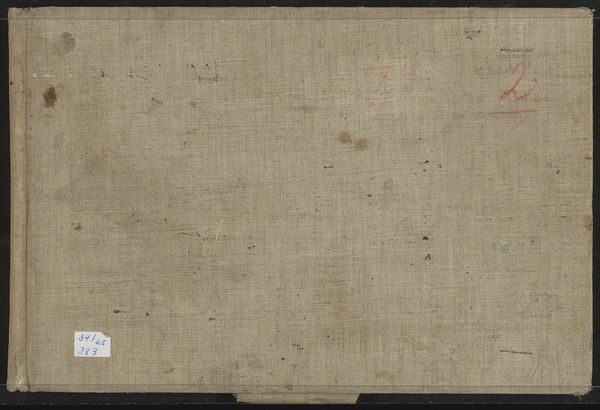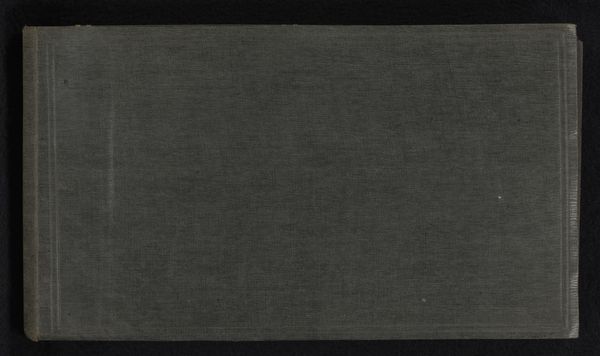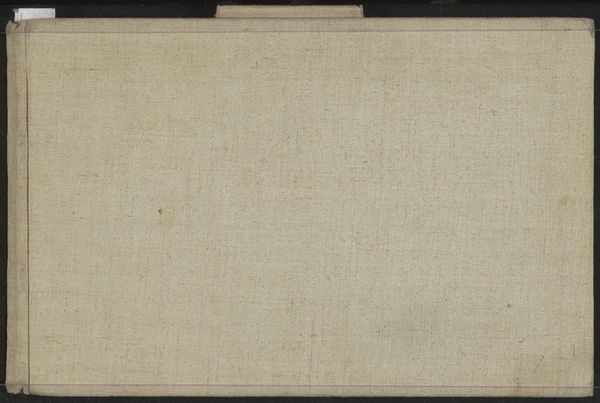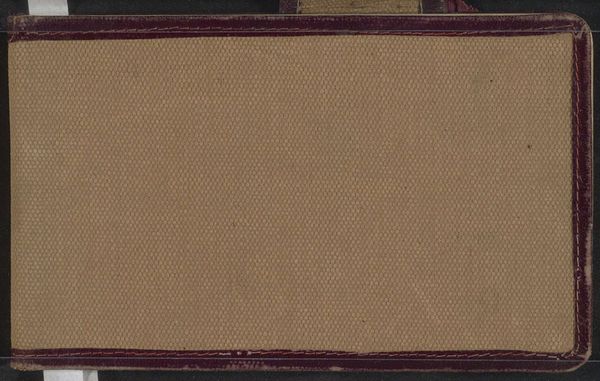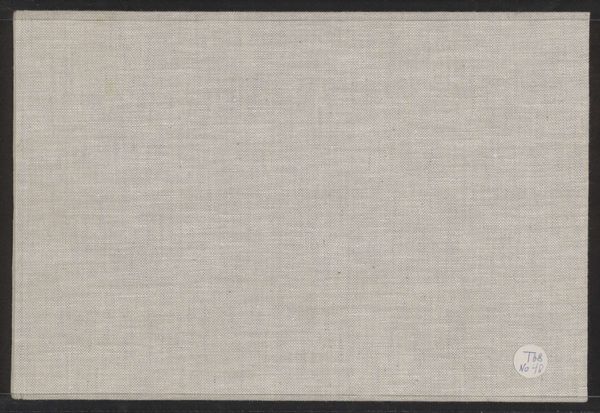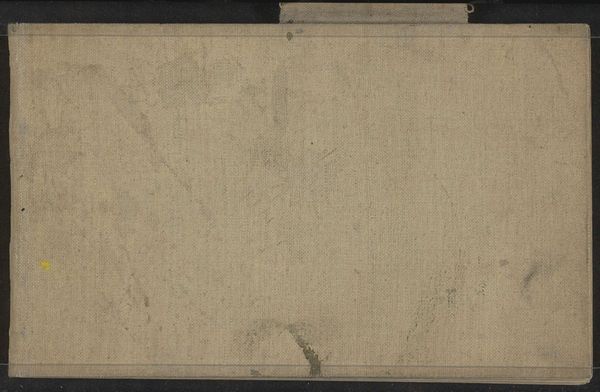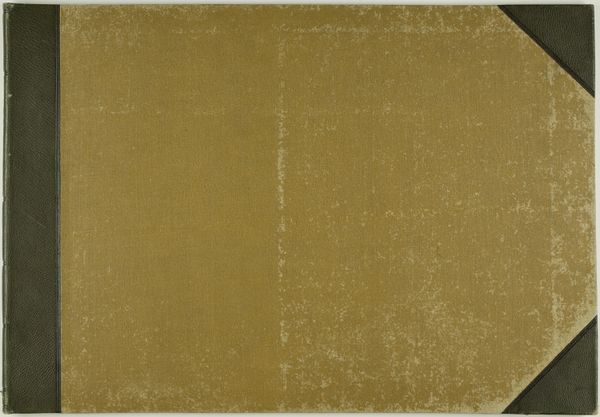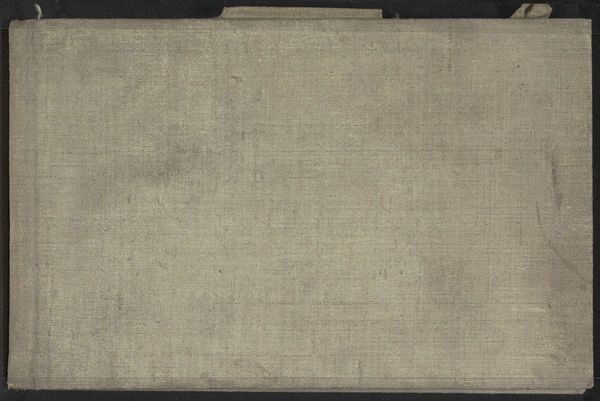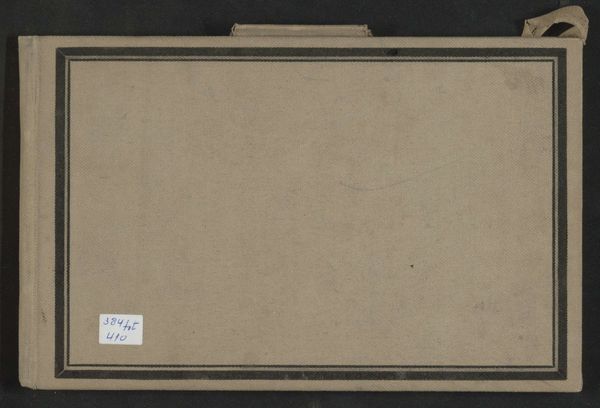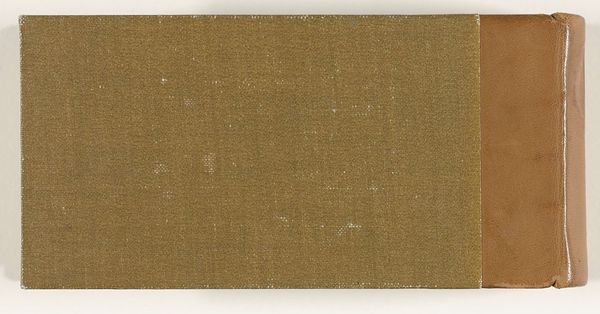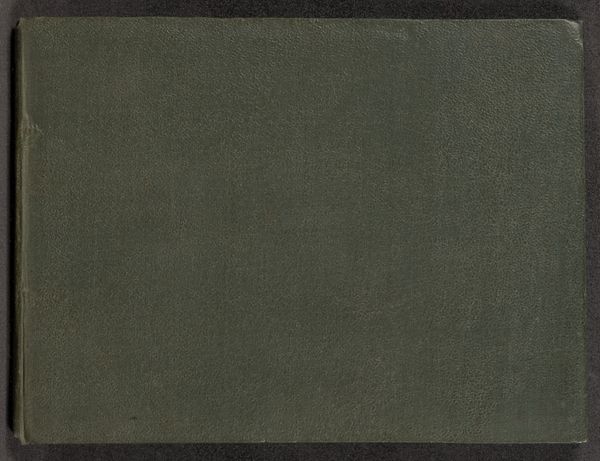
drawing, paper
#
drawing
#
paper
Dimensions: height 115 mm, width 147 mm, thickness 10 mm, width 292 mm
Copyright: Rijks Museum: Open Domain
Curator: This sketchbook, attributed to Johan Antonie de Jonge, contains 29 leaves created between 1881 and 1927, offering a window into the artist’s creative processes during that time. Editor: My initial reaction is one of simplicity. The cover, rendered in a muted olive green, feels almost like a utilitarian object. Curator: Precisely. It's less about the visual spectacle and more about the contained potential. Sketchbooks have long served as symbolic portals to the imagination. This simple cover suggests hidden depths, inviting us to contemplate the artist's evolving ideas and inspirations recorded inside. The materiality itself speaks to a kind of working-class, pragmatic approach to art-making, don't you think? It appears almost mass-produced. Editor: It definitely has an unpretentious, practical vibe. I imagine the texture would feel quite tactile. The choice of a woven cloth –perhaps linen or even a hardy cotton blend–would have certainly dictated how it was made. You wonder who produced this kind of sketch book on a large scale. This was, after all, an era when artist supply chains were becoming increasingly formalized. Were such books individually crafted by artisans, or rolled out on an industrial scale? It's hard to tell, but the very act of mass production introduces implications about wider trends toward cultural democratization and creative accessibility in art. Curator: Interesting. One could certainly argue it’s also suggestive of the democratization of visual expression—a movement away from the constraints of the academy toward more immediate, personal forms of recording and interpreting the world. Perhaps the accessibility of these materials aided that evolution. But the fact that it has lasted this long gives me an eerie feeling of something both ordinary and yet imbued with extraordinary human intentionality. What images did De Jonge wish to set down on paper within the leaves contained by this book? The cover acts almost like a talisman guarding creativity itself. Editor: Right. A silent protector, a shell that keeps creative energies contained and shielded from the elements. Ultimately, what remains striking to me about this "drawing" made with "paper" is this question of how everyday materials participate in art-making. What stories of work, craft, labor and innovation are etched into those seemingly mundane components? Curator: Absolutely. By simply allowing its presence to be a portal into both his consciousness and a transformative period in artistic history. Thank you for opening it with me today! Editor: A fascinating exchange! I never thought a simple cover could be so thought-provoking.
Comments
No comments
Be the first to comment and join the conversation on the ultimate creative platform.
